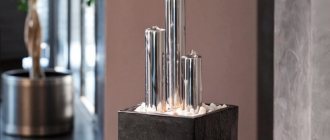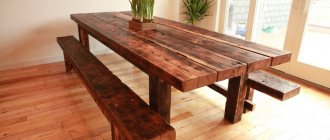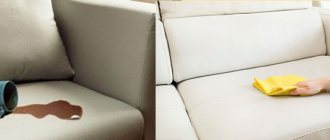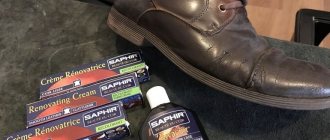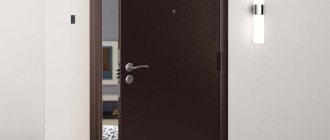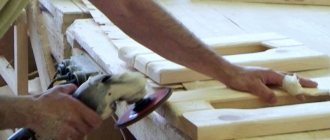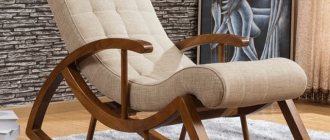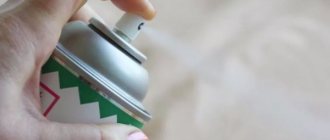But in reality, organizing a fountain at home will be very original, beautiful and sometimes useful.
Organizing an indoor waterfall for your home or apartment is not as difficult as it might initially seem. It can be homemade, collected from shells or bottles, or ready-made from the manufacturer.
It’s worth noting right away that this is a decorative waterfall, the purpose of which is to decorate the room. Additionally, the pleasant sounds of water make it possible to relax and calm down.
DIY decorative fountain
Materials and tools
And first of all, you need to prepare the tools, materials and devices necessary for the work:
- container that you will use as a bowl. This could be an old barrel or a bathtub. The main thing is that the product is strong enough without damage to withstand the volume of water;
- a pipe or a sufficiently strong and dense hose for supplying water;
- pumping unit;
- materials for waterproofing;
- filter;
- nozzle;
- shovel.
Manufacturing process
Once you have everything you need prepared, you can proceed to making a decorative fountain:
- The process begins with digging a pit, which must correspond to the size of the selected container.
- The bottom of the pit must be filled with sand in a layer of 10-15 cm, and then thoroughly compacted.
- Place the bowl in the prepared recess so that its edges protrude 2-3 cm above ground level. Place waterproofing material on top of the container to prevent leakage.
- Now you need to install pumping equipment, a filter for water purification and a nozzle to obtain a jet of the required pressure and shape.
- Remove the wire from the water and connect the installation to the electrical network.
- Turn on the equipment and check the fountain in operation. All errors identified at this stage must be corrected immediately.
The fountain you make will last longer if you regularly check the condition of the devices and promptly eliminate any malfunctions that arise, as well as clean the bowl of any debris that gets into it.
A decorative fountain can become one of the main elements of your site and change its design for the better. You just need to approach its production correctly. With a little imagination and using unnecessary materials, you can certainly create a creation with your own hands that will look no worse than products made by professional craftsmen.
While landscaping their backyards, some owners at some point realize that there is not enough fountain on their property. You shouldn’t give up on this idea if you have everything planned out long ago and there is no extra space left. After all, it doesn’t have to be a large structure. Even in small areas you can find a place to arrange a compact decorative fountain, which will give you coolness and become a wonderful relaxation area.
If you decide to create it yourself, then you need to thoroughly prepare for this work. And first of all, you must understand what type of installation this installation should have, what material it should be made of, and how water should flow in it. These and many other factors will determine whether you will be satisfied with the end result.
If this is your first time making your own fountain at your dacha, then you should not build a complex configuration installation. This will not only require more time, money and effort from you to create it, but will also create certain difficulties for you in the future during care. It is best to build a small fountain of a standard shape, which can be made from the most common materials and which will not be more difficult to care for than any other object on your site.
The intense rhythm of our life requires periodic rest, both physical and moral, and there is nothing more pleasant than sitting in silence, enjoying a beautiful view and pleasant sounds.
Decorative fountains for apartments that fully meet all these requirements may be suitable for this purpose.
After all, there is nothing more pleasant than listening to the sound of rushing water and looking at a flowing fountain. And building it in an apartment, even if it is small in size, is a completely solvable task.
In addition to the listed beneficial properties of this structure, the fountain in the apartment is a good air humidifier.
Why does water flow
“All rivers flow into the sea, but it does not overflow.” This is what it says in the most ancient book of humanity. We see confirmation of these words every day when snow or rain falls from the sky to the ground. The Great Designer launched the water cycle in nature. Imitating him, experienced craftsmen created with their own hands a decorative indoor fountain that pleases the heart all year round. How does this system work?
Choosing the design and placement of a homemade fountain
Before you start arranging the fountain, you should think about ensuring that its appearance is in harmony with the design of your summer cottage, and its dimensions correspond to the size of your allotment.
The smaller the area of the site, the more modest the fountain should be. On the contrary, a large area allows for the implementation of an entire complex with sculptures, a stream and a waterfall.
A fountain with a sculptural composition of ancient gods, animals and amphibians will fit perfectly into a classical garden with a well-defined layout. It is most convenient to make such figures from artificial stone, that is, polymer concrete. The named material can withstand any frost.
A modern garden will be decorated with a fountain built from glass and concrete, polymer materials and stone. A design of this type should be laconic, which will be emphasized by thin silver streams of water.
The rustic style of landscape design will be supported by a composition consisting of large stones and wooden elements. In this case, a cart or a mill will serve as a successful addition to the design.
The factory-made floating fountain deserves special attention. It can be fixed in one place or another. In a large body of water, it is appropriate to place several torches of scattering water.
Great idea for creativity - floating fountains
The miracle of levitation is easy to implement with your own hands in your yard, if you pay attention that the supporting element and the supply tube of the structure are hidden in the stream of water. For example, heavy stone can be imitated using plastic panels for finishing the facade, and support will be provided by a thin stainless steel tube
An interesting effect can be obtained by directing two jets of water against each other. In this case, high precision and accuracy of the design are required.
If you don't like bathing in a barrel, you can put a model of the head and arms in there, and then release a stream of water from its mouth
People around you will definitely pay attention to such an unusual solution.
The trickles of water flowing down the glass look original. Obviously, such a product is subject to homemade craftsmen, but the holes for the outlet of water jets from the upper distribution tube must be made especially carefully.
You should take the choice of location for the fountain seriously. So, too close proximity of trees and bushes will lead to the appearance of leaves and debris in the water. In this case, the device filter will have to be replaced or cleaned frequently. Moreover, tree roots can destroy the reservoir bowl, leading to water leakage.
It is better if the sun visits the surface of the water half of the daylight hours. This lighting mode favors optimal activity of aquatic plants, which can also pollute the device filter.
There is no need to take risks and mount the water decoration too close to the wall of the building. Otherwise, moisture can lead to destruction of both the foundation and the walls of the building. Another addition to a pond in the yard can be the arrangement of a stream and a waterfall, as discussed in the article “An artificial waterfall in the yard, in the garden and at the dacha - how to do it yourself.”
Stage two
The fountain layout is quite simple. With its help, everyone can assemble a similar decoration for their interior. When the pump is installed in the container, you can fill in expanded clay, which must be covered with polyethylene on top. A hole for the hose should be made in advance in the film.
Polyethylene is necessary so that expanded clay does not float when wet. After all, water will be poured into the container. After this, multi-colored aquarium soil should be poured onto the film.
Fountain device
To make a fountain at your dacha you don’t need to spend a lot of money. Of course, it all depends on the size of the reservoir and how you imagine it. Depending on the method of construction, fountains are of closed and open type. We are talking about the cyclical use of water. The closed type uses the same volume of water, driving it in a circle. Open - new all the time. Garden and country fountains are mainly made of a closed type: their design is simpler and more economical. Of course, water has to be added and changed periodically - it evaporates and becomes dirty, but still, the costs are not very high.
When installing an open type system, you will have to think through the water supply system, control of its level, drainage and disposal. You can, of course, use the fountain’s reservoir as a container for heating water before watering, and use the bowl to distribute it throughout the garden, but watering is not needed around the clock, and the fountain can operate in this mode.
A plastic container is visible, and the pump is located at the bottom, right in the place where the pipe sticks out of the water
In the simplest version, to make a small-sized fountain, you need some kind of sealed container and a submersible pump. Any container can be used - a special plastic one for a pond, a barrel, an old bathtub, a basin, a cut tire covered with film, etc. With pumps it’s a little more complicated.
Fountain pumps
Fountain pumps are sold specially, with built-in filters. To make it easier to make a fountain with your own hands, you can buy such models. It’s very easy to work with them: put them in a container, secure it so that it doesn’t move, fill it with water, carry out the starting manipulations (described in the instructions) and turn it on.
Fountain pumps come in different capacities and raise the jet to different heights. Often the kit comes with replaceable nozzles that change the nature of the jet. They are powered by a 220 V network; there are models powered by solar panels. They are made hermetically, so there will be no problems when connecting, no step-down transformers are needed. The only thing that won’t hurt is an automatic machine and an RCD on the line to which the pump will be connected. This is just in case, to increase security. The price of the smallest and lowest-power fountain pump is $25-30. Productive models cost several hundred or more.
You can use any submersible pump for the fountain. But you need to buy or make a filter for it (you can make a sand filter) and a step-down transformer. A security group from a machine gun and an RCD on the line will not be out of place here either. This circuit is worth tinkering with if you have an old pump that is not currently being used.
How to do it without a pump
Is it possible to make a fountain without a pump? It is possible, but it is open type. For example, bring a water supply pipe into the pond - central or supplying water from a well or borehole. The water coming out under pressure will produce a jet of some height. By installing a tip on the pipe, we can change its shape. But with such a construction, it is necessary to figure out where to divert the water. You can go back to the well or to the river, to the irrigation area, etc. Although with such an organization there is a pump, it pumps water into the house, and the fountain is only one of the flow points.
Scheme of organizing a fountain without a submersible pump
The second option is to place some kind of container at a height, supply water to it, and from there it is supplied through pipes to the fountain located below. To create a more or less decent jet height, the container must be raised 3 meters or higher. But the question remains: how to supply water there. Again using a pump, but no longer submersible. They are cheaper, but require a filter. You will also need a pit in which the equipment is installed. A system of pipes connects it to the bowl of the fountain.
Backlight
A fountain of any type and size can be equipped with lighting. There are two main groups of lighting:
- underwater;
- surface
The latter creates a fabulous, mystical, fantastic atmosphere in the dark. Rays of light passing through the thickness of moving water are especially beautiful. Both underwater and surface lighting can be single-color or multi-colored.
The lighting device requires high-quality hydro- and electrical insulation of the equipment. Surface is the safest. For the backlight device use:
- LED devices;
- LED strips;
- LED spotlights;
- Spotlights.
To create cozy overwater lighting, you can install low-power lamps near the water. For an unobtrusive emphasis on floating decorative elements, waterproof LED RGB lamps with a voltage of 12V and protection class IP 68 are suitable. The most popular way to illuminate country fountains is to use LED strips with a self-adhesive base.
Where to install the fountain
When choosing the optimal location for construction, it is important to take into account such a factor as the slope of the ground. If the surface on the site is uneven, then it is better to install the structure at the bottom
This will make it easier to adjust the volume of groundwater, and will also increase the oxygen saturation of the air.
Install the fountain where it will be convenient to admire it
It is not recommended to build a fountain:
- Near the house, since in a strong wind water will fall on the house itself.
- In an area with direct sunlight, which will contribute to the rapid flowering of water.
- Under a tree, as fallen leaves or overgrown roots can damage the product.
The fountain must be placed so that it does not interfere with movement around the yard, but on the other hand, so that it can be clearly seen from different sides. We advise you to place it near the place of leisure.
The smallest distance that should be between the structure itself and green spaces is 0.5 m. Thus, the plants will be protected from large amounts of moisture. The same principle applies to furniture near a water feature. The most optimal location of the structure is a place in the shade and without wind, near water and an electrical network. This will save you effort and material costs.
After we have decided where the fountain will be, we can begin its construction or what the shape and depth of the building will be
Installation location
In order for a decorative fountain to successfully cope with its role, it is necessary to correctly approach the location of its placement.
- It is advisable to choose a prominent place for the fountain so that it is clearly visible from all sides, otherwise such an installation will lose all decorative meaning.
- It is recommended to choose an elevated location for the fountain, otherwise water will accumulate and stagnate in the bowl.
- Try to install the fountain in an area where it will be protected from direct sunlight, which can cause flowering and the associated green tint and unpleasant odor.
- Don't place the fountain too close to trees if you don't want their leaves to fall into the bowl and clog the pump.
Original waterfalls
A vertical waterfall is a stylish and fashionable decoration in any interior. It requires more time and effort. The difference in tabletop and vertical compositions is the pump, which should be much more powerful
When choosing a pump, you should pay attention to the pump; it should lift water to a height of about 2 meters. Thus, it is possible to achieve the arrangement of a waterfall, the top of which will be located right under the ceiling
Before you begin the main work on constructing the fountain, you should take care of waterproofing the floor surface. You can use plastic film. It is better if it covers an area slightly larger than the capacity of the structure.
To prepare a panel that will be used to drain water, you need to use some materials. It is desirable that they be of high quality, and the life of the waterfall will be longer.
Install the pallet and attach the board on which the glass will be fixed vertically. Using support bars, a frame is knocked down onto which the crossbar is fixed.
Then make holes in the water supply not very far from one another to give the appearance of the integrity of the waterfall. If they are placed at a more distant distance, you will get several separate streams. Make a plug at the end of the tube and attach it to the top of the lid. If desired, provide illumination.
Place the glass panel in the lower zone of the clamp and install it in a vertical position. Using liquid nails, attach to the boards on the side. To prevent liquid from spreading, strips of glass or plastic are placed on the edges.
The pump is installed in a pan, a tube is connected to it to supply liquid to the top. After connection, the connection is treated with sealant. Hang the front cover. Then they move on to decorating the fountain based on their own preferences.
There is a huge selection of materials for decorating indoor fountains and waterfalls; you can purchase them at any pet store. Various flower boutiques sell bamboo supports, as well as original containers and reservoirs. By going to the souvenir shop, you can buy figurines and bonsai.
It is worth considering attractive additions that can decorate any structure. First of all, of course, we are talking about backlights. They can be different, with an iridescent effect. The most commonly used is an electric generator. To do this, you will need a small device purchased in a store; it will cope with the task and make the LEDs work.
You can place the elements in any quantities and in different places, the main thing is to remember that water should not get on them. After all, this is electricity, so it’s worth taking safety precautions.
Assembly method
At the very beginning, of course, you need to prepare the tank. To avoid problems in the future, it should be quite roomy. It is advisable to try to leave extra space that can be decorated in the future. This is much better than wiping the water off the table and throwing away the unsuccessful product. The depth of the reservoir must be sufficient to completely submerge the pump in water. A good material for making a homemade fountain is to use two ceramic pots as a base.
To do this you need:
- Prepare 2 ceramic pots and 5 trays. In the center of the large and small pallets you need to drill a hole for the pipes, and then cover all the items with waterproof varnish. You can also make several cuts along the edges of the pallets, which will ensure beautiful drainage of water.
- Install a pump at the bottom of the created tank and cover it with a pot, then pull the tubes out through the hole.
- Nearby you need to install a slightly smaller pot, on which another tray will find its place.
- The next tier is 2 more pallets, which will be arranged in decreasing order. It is important that the holes in the trays are positioned correctly and allow water to flow from one to the other.
- After assembling the main structure, you can safely decorate the fountain with various stones and shells.
How to make a waterfall with your own hands.
Important points to consider when creating a waterfall:
- The waterfall should look beautiful from different points of the site.
- Use the natural slopes of the site to create a waterfall.
- It may be more effective to make several small waterfalls than one large one.
- The waterfall should harmoniously complement the landscape design of the garden plot, and not outweigh it.
- Place a waterfall or fountain closer to your home and recreation areas so you can admire them more often.
- Use local stone to design your waterfall for a more natural look.
- When designing the size of the waterfall, calculate the required power of the electric pump and coordinate your design dreams with your electricity bills.
A landscape waterfall should be located slightly away from deciduous trees so as not to become clogged with fallen leaves. If the area of the reservoir allows you, then in the thicket of the pond you can place aquatic plants in pots, strengthening them at the bottom with stones.
If film is used to build a waterfall, its edges should protrude at least one and a half meters beyond the water flow line.
First, a lining is placed at the bottom of the pit, and a liner is placed on top of it. If the line of a waterfall or pond is too large, then lay the film overlapping.
The bottom of the pond and the line of the waterfall are strengthened with small stones, the side parts of the reservoir are strengthened with large stones, filling the distance between them with small pebbles.
Flat stones are installed along the waterfall line. Experiment with the arrangement of stones - you will hear that the sound of flowing water and how the waterfall breaks on the surface of the pond depends on this.
The stones that form the pond and waterfall can be securely fastened together with cement mortar.
A landscape waterfall must be decorated not only with stones, but also with perennials so that it fits naturally and harmoniously into the landscape design of the garden.
You will get an absolutely amazing picture on summer evenings if you add “luminous stones” to the bed of your waterfall and pond.
If there is no space in your dacha for a pond, you can make a small waterfall without a pond. In this case, the water is collected in an underground reservoir with gravel and pushed to the top of the waterfall by a pump.
Material for construction
So, below we will describe how to make a fountain at home. To create an original design you will need:
- Glue.
- A container that will serve as the base for the fountain.
- Aquarium pump.
- Approximate diagram of the fountain
- Large sink.
- A small piece of hose commonly used for cleaning aquariums.
- Polyethylene film.
- Expanded clay, decorative multi-colored soil and shells of various shapes and sizes.
A large sink will serve as the central detail of the entire composition. A pump and hose are needed to pump water, and multi-colored soil, shells and expanded clay are needed for decoration. In addition, you need a small piece of plastic film. So, expanded clay can be purchased at any flower shop. As for black, red and yellow soil, it is better to use a special mixture for aquariums.
About the nuances of installing LED equipment
Before assembling decorative lighting with your own hands, you need to make markings. Experts recommend doing this before purchasing the materials themselves, in order to know exactly what materials and in what quantities may be needed.
The protective layer is removed from the LED strip and pressed onto the work surface with an adhesive base. If it is necessary to cut the canvas, do it only in marked places where it is permissible to make cuts. It is also strictly forbidden to pinch the tape. A bend of 20 mm is allowed - no more.
The glued device is connected to the controller, and then to the power supply via a step-down transformer. It may happen that the controller does not “pull” the tape that is too long.
Several amplifiers will help correct the situation.
In order for the resulting design to comply with all standards, it is important to remember the main rule: the recommended fragment length for smd 3528 tapes is 5 meters, and for smd 5050 - 3 meters
Selecting a container
A home fountain should be durable enough and at the same time beautiful. Therefore, the container for its base should be selected more carefully. The first step in making a structure is selecting a vessel. In this case, you can take a flower pot for a fountain. If there is no such container, then you can use a flower pot, a beautiful basin, a clay vase, etc.
The most important thing is that the vessel does not leak. If, for example, there are holes in a flower pot, they should be sealed with epoxy glue.
Waterfalls in the room
A stylish and fashionable interior decoration is a vertical waterfall (Fig. 4). Making this type of indoor fountain with your own hands is not much more difficult than a mini tabletop fountain. The only difference is the pump power for such a large structure
When looking for a pump, you need to pay attention to the fact that the height of the water column is at least 1.8-2 m. This will make it possible to build a water wall or stream originating from the ceiling of the room
Before making a home waterfall, you need to waterproof the floor in case the tank leaks. Polyethylene film can be used for this. It is advisable to cover with it a section of the floor 15-20 cm larger than the perimeter of the future structure.
For the panel on which water will flow, you will need:
- thick glass or mirror;
- 5x5 cm bars for support posts;
- boards for the base of the top cover;
- a plastic pipe with a diameter of 2 cm for distributing water over the glass;
- a block or thick board for the clamp step.
The structure of the fountain supply system is the same as discussed above.
On top of the fountain tray, you need to install and secure a board with a stop to fix the glass in a vertical position. Knock down the frame from the support bars and crossbars on top. The role of the crossbar can be played by the horizontal bar of the top cover.
Drill a piece of plastic water pipe, the length of which is equal to the width of the glass panel, in one line along the axis. The holes should not be located too far from each other so as to avoid the impression of separate streams. Plug one end of the sprinkler tube and secure it to the top cover strip. Install backlighting if necessary.
Place the glass panel vertically, resting the lower edge against the step of the latch. Attach the side parts to the support bars using liquid nails. To prevent water from spreading beyond the panel, sides made of strips of glass, wood, and plastic must be glued to its edges.
Install the pump into the pan and run the water supply tube up to the open end of the distribution pipe. Connect and seal the connection. Hang the front part of the top cover. Decorate your home fountain with your own hands according to your own taste. Through many holes in the sprinkler pipe, streams of water will fall onto the glass and flow down it into the pan, creating the illusion of a falling stream.
Materials for decorative finishing of indoor fountains, made with your own hands in tabletop or floor-standing versions, can be found in pet stores (colored soil, castles, shells, ships in the aquarium department). Flower shops sell bamboo plant supports and beautiful containers. In the souvenir departments you can find artificial bonsai, figurines of birds and animals.
There is nothing more pleasant than relaxing after a hard day under the quiet splash of water in a man-made stream. The decorative functions of the fountain are perfectly combined with its main purpose - to humidify the air in the room. You can add live indoor plants to the streams of flowing water.
What do you need to prepare for work?
In order to make your own fountain from improvised materials, you need to prepare a number of basic components:
- A reservoir into which water will flow in the future.
- Waterproof glue.
- Decorative elements.
- Silicone pipes.
- Pump.
We must not forget about the selection of the main element - a special pump. It is impossible to say unequivocally which device is better to purchase, because everything is individual and depends on the wishes of a particular person. The required pump power varies depending on the desired height of water lift. A universal option is a high-power pump with a regulator. To do this, you can use an aquarium pump to filter the water.
The final stage
After the composition is completely folded and all its elements are secured, water must be poured into the container. There is no point in completely submerging the soil. This way the fountain will lose its main idea and its charm. The most important thing is that the pump is completely hidden under water.
Now you can turn on the fountain. To do this, you need to plug the cable from the pump into the outlet.
That's all, the homemade fountain for the room is ready. However, it is worth remembering that the water from it will gradually evaporate, especially in the hot season. Therefore, it will be necessary to add liquid to the decorative fountain at least once a week. If necessary, it can be done more often.
You can disguise the cable from the pump going to the outlet. In addition, the indoor fountain can be decorated with artificial flowers. This will give the composition a more impressive look.
